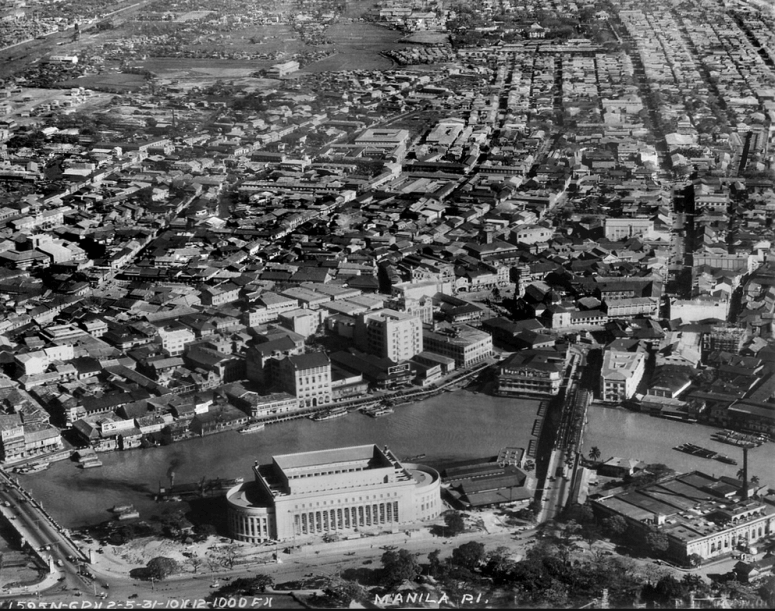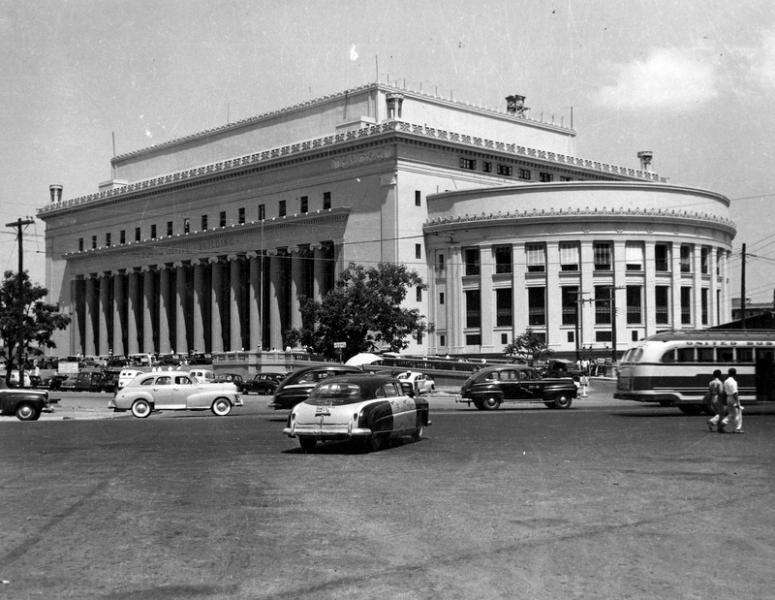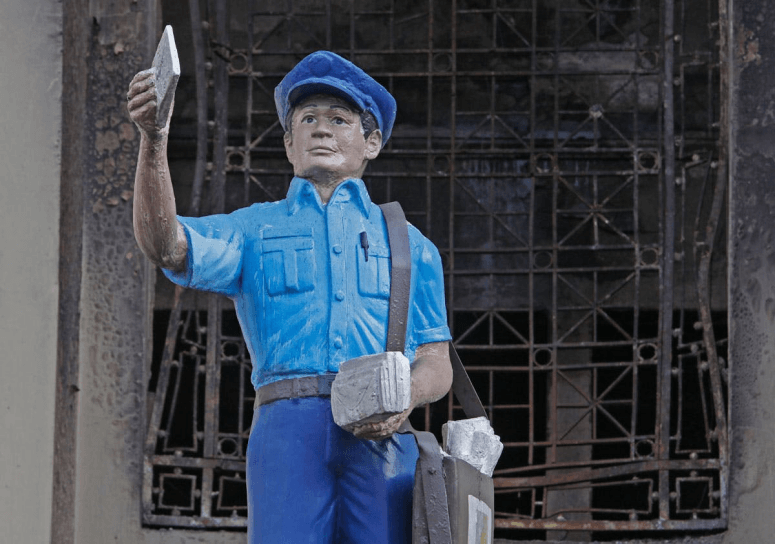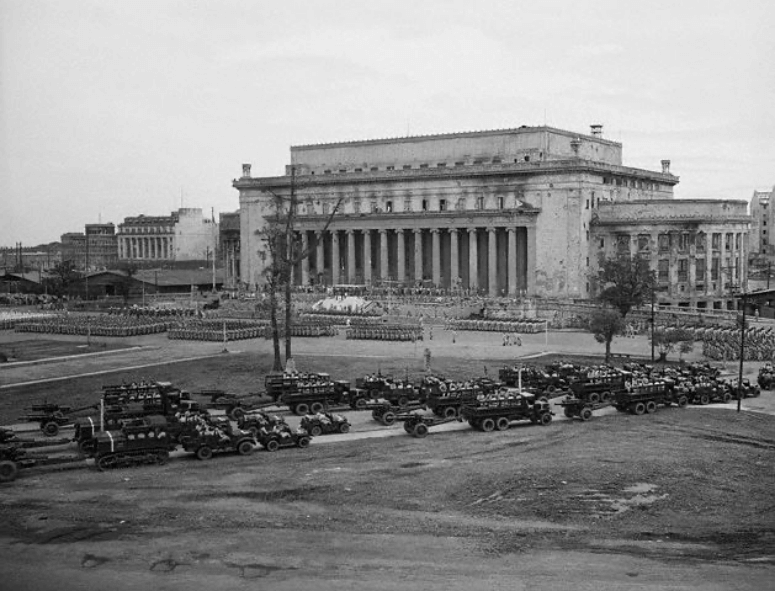Beyond art and print: The history and legacy of the Manila Central Post Office
The image of a burning structure will always be heartrending, be it from a literary work, a theater screen, or just the mind’s eye. So when the news broke that the Manila Central Post Office was on fire last May 22—during no less than a Monday and the National Heritage Month at that—grief was instantaneous, communal and, most especially, necessary.
All day long, social media has been replete with photos and videos depicting the smoke billowing from the Post Office, the droves of firefighters extinguishing the blaze, and its beige color turning charcoal in parts. Melancholic reactions and wistful anecdotes also filled the news feed.
“I felt sad,” Oscar Casaysay, executive director of the National Commission for Culture and the Arts (NCCA), told PhilSTAR L!fe. “Itong lungkot na sinasabi ko, personal, pero shared by all Filipinos, even abroad.”
The fire that gutted the building started past 11 p.m. of May 21, Sunday. It was raised to second alarm at 1:09 a.m. of May 22, was declared under control hours later at 7:22 a.m., and was put out the following May 23, Tuesday, at 6:33 a.m.—an ordeal lasting about 30 hours.
Authorities suspected the fire started in the basement where paper and wood are being stored. It reached the third level, whose floors are made of wood. Various items inside the building, including parcels and some national identification cards, were destroyed.
The real cause of the fire is still under investigation. The Bureau of Fire Protection (BFP) estimated that the incident caused infrastructure damage worth P300 million.
Dominic Galicia, the principal of Dominic Galicia Architects, meanwhile said the “resigned sadness” comes from knowing that the incident could’ve been prevented. Galicia highlighted the building’s historical role as a vital nexus of communications of an earlier day as well as its timeless architecture.
“This sort of thing has happened before in other beautiful Philippine structures,” he told L!fe. “[It] could very well happen again.”
Historical and cultural significance
The Post Office building, beyond serving as the headquarters of the Philippine Postal Corporation (PHLPost) and the country's main mail sorting and distribution operations, has a much significant role in Philippine history and culture.
Located at the northern end of Liwasang Bonifacio and along the banks of Pasig River in Lawton, the building was designed by United States-trained Filipino architects Juan Arellano and Tomás Mapúa, as well as American Ralph Doane in neoclassical style. Construction began in 1926 under the supervision of engineering firm Pedro Siochi and Co., and was finished in 1928.

Its placement is a highly strategic one. Not only the Pasig River was a convenient medium for delivering mail, but the building’s location was also accessible from all sides of the capital. According to the National Historical Commission of the Philippines (NHCP), the idea was part of the so-called Burnham Plan by American architect and city planner Daniel Burnham, who sought to modernize Manila alongside Baguio in the 1900s.
The Post Office is considered the grandest building during its time, with Casaysay taking note of its harmonious combination of proportions, purity of lines, and chastity of details. As writer Arielle Abrigo describes it in the architecture magazine BluPrint, “Its colossal, rectangular volume fronts 16 Ionic pillars that are aligned above the steps in front of the entrance. The body is capped by a recessed attic storey, which is also skirted and supported by two semi-circular wings. Inside the main lobby, subsidiary halls at each end rest under the crescent-shaped spaces roofed with domes.”
Galicia in a 2018 video feature for BluPrint also took note of its terrazzo flooring which, despite being damaged in some parts, remains “eye-catching and compelling.” He also highlighted the grilled transaction windows, the march of doors, and the long bank of counters.

Even before such architectural feats, the country’s postal system itself already had a rich history, operating since 1767 Spanish occupation when the country’s very first post office was established in Manila, the PHLPost website said.
Moreover, the building was a World War II site. The NHCP on Facebook said it served as a garrison for Japanese forces, as it was an "earthquake-proof and heavily reinforced concrete" and was "practically impervious to direct artillery, tank, and tank destroyer fire.”
During the Battle of Manila in February 1945, American forces subjected it to artillery fire for two days. Japanese soldiers responded by barricading all of its rooms and corridors with sandbags and barbed wire. On Feb. 22, the Americans were able to enter the building through the second-storey window, engaging in room-to-room combat with the Japanese and setting the building’s interior ablaze.
“The fight for the Post Office was difficult and crucial owing to its strategic location,” the NHCP said. “With that said, the Americans found it strange that the Japanese made no greater effort in holding it by sending reinforcements through a trench and tunnel connected to Intramuros.”
The building was restored in 1946, carrying the original design of Arellano, Mapúa, and Doane. It even served as the backdrop of the Philippine Independence Day parade in July that year.
“This building is a witness of our infancy as a republic and of the development of our democracy,” Galicia said in BluPrint’s 2018 video.
When such a creation possesses much grandeur—its memories of smoke, shrapnel, and bodies notwithstanding—it must be safeguarded at all costs.

The NHCP named the Post Office a national historical landmark in 2012 alongside the Plaza Lawton. The commission also installed a historical marker to it in 1994. In 2018, the National Museum declared the Post Office an “important cultural property.”
According to Republic Act No. 10066 or the National Cultural Heritage Act of 2009, national historical landmarks, sites, or monuments are entitled to “priority government funding for protection, conservation, and restoration.”
No restoration date yet
Casaysay said there’s no definite date for the Post Office building’s restoration yet, as it must undergo thorough assessment first. The process could take at least a couple of months and especially years. He cited as example the Arellano-designed Metropolitan Theater, which reopened in December 2021 after a staggered six-year restoration process.
“Hindi madali ang proseso, pero kakayanin,” he said.
Casaysay said the NCCA and PHLPost, along with other cultural agencies like the NHCP, National Museum, National Library, and National Archives, also created a task force to determine how to proceed. They’ll also check whether there are items in the building that can be salvaged.
PhilSTAR L!fe also reached out to PHLPost for an interview request, but has yet to receive a reply.
Manuel L. Quezon III, the columnist and Ayala Museum’s former history curator who’s the grandson and namesake of the Commonwealth president, meanwhile lamented that many other postwar buildings haven’t been properly restored.
Quezon on Twitter called the Post Office a “white elephant” for decades now, and suggested turning it into an extension of the National Museum upon restoration.
Galicia agreed with Quezon, saying his suggestion is an “eminent possibility” since a building like the Post Office can "envelop many functions that address contemporary needs."
“We can bring color to this elephant,” he said, adding that though it can “definitely” be restored to its former glory, it can also undergo adaptive reuse.
Galicia cited as example New York City’s James A. Farley Post Office (formerly the General Post Office Building), a structure built in 1911 whose portion was transformed into Moynihan Train Hall.

“Respect the unimpeachable significance of the building while also respecting the unavoidable needs of the present day,” he said.
Wake-up call
Casaysay described the incident as a wake-up call and, moving forward, said there must be a review of the country’s cultural heritage management plans.
“Sa ngayon kasi, we're more on restoration," he said. "Di pa ganoon ka-proactive."
He said the country's cultural agencies, whose owned properties are already old, will also work more closely with the BFP to conduct property inspections every now and then.
“At the very least, install sprinklers,” Galicia said of buildings like the Post Office. “This is clearly one of many wake-up calls, so many that insomnia should set in.”
Members of the Senate and House of Representatives, meanwhile, filed resolutions calling for an investigation into the incident. PHLPost Postmaster General Luis Carlos has expressed openness to the initiatives, but noted that the BFP will have the final say on the matter.
Though the Post Office was marred by fire, the statue of Mamang Kartero just outside the building is curiously left unscathed, still standing with pride against the backdrop of ruin.

Galicia said the image reminded him of the passage that’s inscribed on the facade of the James A. Farley Post Office, i.e., "Neither snow nor rain nor heat nor gloom of night stays these couriers from the swift completion of their appointed rounds."
“Those words come to mind as I look at Mamang Kartero,” he said. “No fire in gloom of night will stay the brilliant renaissance of the Manila Central Post Office building.”




